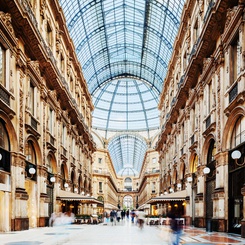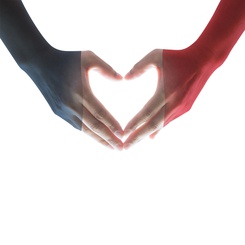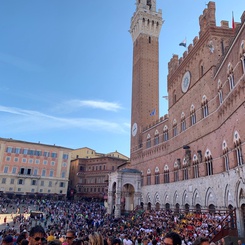A moot point in the field of luxury business is whether or not it follows a business cycle. Those who are for the motion will argue that the luxury industry is today a global business. Though luxury goods and services are made and distributed primarily from France and Italy, the consumers are global. Thus any natural calamity or disaster would have direct implications on the business. Those who are against the motion will argue that luxury business is not like any other business. It is dependent on the enhanced disposal income. In the world of today, wealthy consumers with growing disposable income know how to protect their wealth, leading economists studying rising income inequality to posit that the rich get richer while the poor get poorer in most nations today. These high net worth individuals would hence suggest that they will continue to consume and thus luxury businesses will constantly deliver results, regardless of the cycle [1].
Following the above argument, the most important driver for luxury brands to succeed is, thus, dependent on the disposal income of its clientele, which translates to consumer buying power. The disposable income of high-net-worth individuals has increased substantially during the preceding 10 years. As mid to high income society has become relatively more affluent, consumers with disposable income have been “created” through strategic decisions of brand building which created the desire, and hence the demand, for products beyond the individual’s basic needs.
These strategic decisions were planned and are at the very core of luxury brands. The decisions were executed and seamless execution was the hallmark of strategy implementation. But what if, when all is going well, certain events are not under our control? For example, in 2001 the world watched as the terrorist attacks in New York and Washington took place, followed by the war in Afghanistan in 2001 and the invasion of Iraq in 2003. The early 2000s also saw a recession in many countries of the world, aggravated by the outbreak of SARS in Asia in 2003. In 2004, the tsunami in Asia killed hundreds of thousands. In 2007, the subprime mortgage crisis that began in the United States housing market spread all over the world and caused, among many other things, the collapse of Lehman Brothers and the European debt crisis of 2011, which continued to have effects such as the Cyprus bailout and political turmoil in Russia and Italy. During 2009–2013, this industry felt the impact of the crises[2].
The lessons from the crisis had deeply affected the luxury world, but in a way that was somewhat predictable. For many years, the luxury brands were undergoing constant growth and no one thought they could be affected due to the belief in non-cyclicality, product, geographic & sectoral diversification, category segregation and demand frustration. The general opinion was rebound is imminent and that the losses would soon be overshadowed by the perennial story of growth and profitability.
In 2020, the situation has repeated itself with the outbreak of coronavirus. The rapid spread of the respiratory illness COVID-19, or, novel coronavirus, resulting in deaths, travel bans, store closures and face mask shortages, has awakened the industry once more. The outbreak, which originated in the Chinese city of Wuhan, has so far killed more than 4600 people with over 124 500 infected worldwide, mostly in China (numbers as of March 12th, 2020) [3].The crisis is for real as far as the luxury world is concerned. The response of the luxury sector revealed to the analysts, researchers, investors, and other stakeholders that luxury was also sensitive to the economic situation of the global world, just like every other sector.
In fact, it is almost naïve to pretend that luxury was invincible. This is in fact the consequence of the evolution of the luxury world. Not only big and financially strong conglomerates with millions of customers faced the crisis—it is also faced by small family-owned players of the luxury business. They are all affected by this crisis and the stock market. For example, on February 25th, 2020, the S&P 500 just wiped out about $1.737 trillion of its value during its two-daymarket sell-off, according to S&P Dow Jones Indices [4].
None of us were prepared. Even all strategic planning experts could not have predicted these events and the extent of its effect on business. Historically, the luxury industry has been resilient. The strength of the brands and the rising disposable income in emerging and frontier markets make it resilient. As the consumers’ sentiment rebounded, the luxury industry became the industry to look forward to, especially in the CAC40, which saw a 20% rise in the last five years primarily due to the luxury stocks of LVMH, L’Oreal, Kering and Hermès. The crisis comes as the luxury sector was trading near all-time highs of about 26 times forward price-to-earnings, after years of strong growth driven in large part by Chinese consumers. The effect over one month or one quarter is a localized event, but the effect over a year can be an entirely another story. To start with, travel retail has been heavily affected. The supply chain has been severely affected. Business at stores has been affected. Stores need to be closed. Consumers have to stay indoors.
The strategic response to the crisis will not be easy. It shows that the evolution of the luxury sector is ongoing. Responses to the 2009 crisis were varied. A change in consumer behaviour was observed during the recession, during which consumers spent more time comparing prices of various fashion brands on the internet. Thus, the conversion of a potential customer into an actual customer required more time and resources. Before, a consumer bought 10 products, but then they bought just one, and only after careful deliberation. The broad strategies adopted by players during the crisis involved two fundamental orientations: internal and external. Internal strategies, as the name suggests, were internal to the company and were those that were not visible to the consumers. External strategies were those that were undertaken to gain the consumer’s attention and buy-in. The internal strategies included cost-cutting, relocating the supply chain, relocating inventory, greater focus on the product quality, financial restructuring, and downsizing. Managers explained that the natural tendencies of companies during a crisis such as this one are to cut costs, drop prices, and stop expanding, as these strategies have the most immediate impact on numbers.
The external strategies included expansion in terms of both product offering and geography, repositioning, up-scaling of the brand to tap the richer among the super-rich, or downscaling to recruit a larger customer group. In response to the crisis, as a knee-jerk reaction, some luxury brands tried hiring freezes, reducing the number and the size of the collections, rationalizing media spending, and reducing headcounts. It was felt that dropping prices and cutting costs were the last resorts. The press referred to it as cost containment.
What can luxury brands do in this scenario? What would be their strategic response to this crisis?
- Renew and re-engage in relationships.
- Use data-mining to establish personal connections with all stakeholders including family members, customers, employees, and suppliers.
- Identify and keep the interest of the loyal consumers.
- Harness and engage with the power of e-commerce by moving products and preferences.
- Customized attention to all loyal clients with rewards for loyalty.
- Encourage participation and interaction on social media over handheld devices and mobile apps.
- Wait, watch and keep in touch.
A salesperson at Place Vendome reiterated:
“This year, the fashion shows will be different. China is absent. Many empty seats. At the last show, we had a pink croc jacket. We never thought it would sell. It was for the show. At the end of the show from nowhere a Chinese client came up to the buying area and ordered the coat for 130,000 Euros. We are going to miss them this time around”.
Only time will tell what the unfolding events of cyclicality will lead to, how the industry will face COVID-19 and changing consumer tastes and preferences.
References
- Danesh, S., & Simonian, H. (2009, February 2). Luxury goods succomb to the cycle. https://www.ft.com/content/7702cf42-f153-11dd-8790-0000779fd2ac
- For a detailed analysis of a strategic response to crisis, please refer to : Chapter 1: Definition and Crisis of Luxury in The Road To Luxury: The Evolution, Markets and Strategies of Luxury Brand Management (Som & Blanckaert, 2015)
- World Health Organization Situation Dashboard, https://experience.arcgis.com/experience/685d0ace521648f8a5beeeee1b9125c
- Fitzgerald, M. (2020, February 25). Coronavirus wipes out $1.7 trillion in US stock market value in two days. https://www.cnbc.com/2020/02/25/coronavirus-wipes-out-1point7-trillion-in-us-stock-market-value-in-two-days.html








